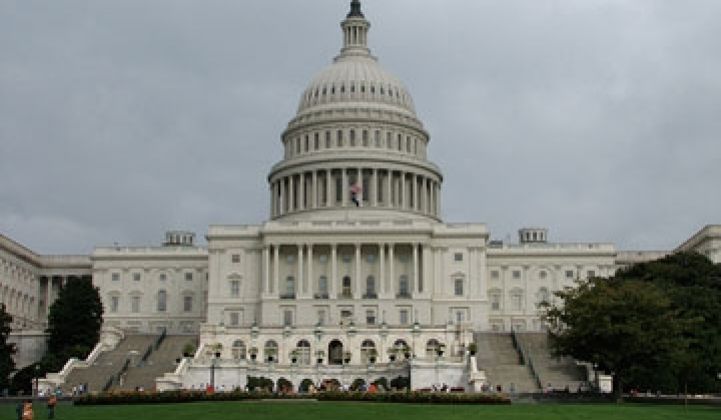It should come as no surprise that Democrats would have to allow compromises to the House energy and climate bill. The question is how many more concessions will they have to make to get the bill passed by Congress.
Details released by the House Energy and Commerce Committee yesterday showed that the path to a final bill is full of big industrial interests such as utilities, refineries and other major polluters. Plus the Republicans aren't keen on it, seeing the bill as an anti-business move.
Meanwhile, President Obama has kick-started his healthcare reform initiative, which will take some energy and attention away from the climate bill. Rep. Henry Waxman, head of the House Energy and Commerce Committee, said he wanted to wrap up the work on the climate bill soon so that he could focus on the healthcare bill. House Speaker Nancy Pelosi said she wants the House to vote on the healthcare legislation by the end of July, but hasn't set such a specific deadline for the climate bill except that it should happen at some point this year.
So what are the compromises in the climate change bill, or the American Clean Energy and Security Act of 2009? For one thing, the idea to auction off all of the permits to emit pollution under a cap-and-trade scheme –something Obama advocated – is dead.
The House committee leaders have agreed to give 15 percent of the permits free to what it calls "energy-intensive, trade-exposed industries" such as steel and cement businesses. These businesses would get the free permits through 2025.
The rationale is not to burden these industries with the hefty costs of pollution when they have to compete in the global marketplace, something that some European countries also used to beat back efforts to tighten rules for the European Union's cap-and-trade program (see U.N. Climate Talks Pose Big Impact on Greentech). In a statement about the free permits, it cited aluminum maker Alcoa, forest product producer Weyerhaeuser and steel maker Nucor Steel as likely beneficiaries.
Under a cap-and-trade scheme, polluters are supposed to buy permits if they emit beyond the allowances they already have, and they would be buying those permits from those who emit less. The number of permits would decline over time, so companies would have to figure out ways to emit less or to pay more for the limited number of allowances.
Utilities would get 35 percent of the permits for free, and the auto industry would get 3 percent from 2012 through 2017 to help them develop electric cars under the current version of the climate bill. After 2017, the industry would get 1 percent through 2025.
Oil refineries are still haggling with the House committee on their share of the freebies.
"The biggest disappointment is the direct allocations of allowances," said Elise Zoli, chair of the energy practice at Goodwind Procter, at Greentech Media's Enterprise Carbon Accounting symposium in San Francisco today. "There is a worry that it will eliminate the effectiveness."
By giving away permits for free, the government wouldn't generate as much revenue as Obama had hoped. Earlier this year, the president had pinned his hopes on generating $646 billion from 2012 to 2019 by auctioning off permits (see Chu's Wish List: Cap-and-Trade and Cheaper Solar and House Energy Bill Draft: Cap-and-Trade Included).
The House committee also has reduced goals to cut greenhouse gas emissions. Instead of reducing emissions to 20 percent below the 2005 levels by 2020, the current draft says 17 percent. The 83 percent by 2050 proposal still stands.
The push to set a national mandate for renewable electricity generation also has been tempered. Instead of requiring utilities to have 20 percent of its power mix coming from renewable sources such as solar, wind and geothermal by 2025, the current bill would require 15 percent by 2020. Utilities would be required to deploy energy-efficient measures to achieve 5 percent savings per year.
The renewable electricity provision would give state governors the power to cut the mandate to 12 percent for renewable electricity generation and 8 percent for energy efficiencies if they figured that their utilities couldn't meet the higher requirements.
Editor-in-Chief Michael Kanellos contributed to this story.



